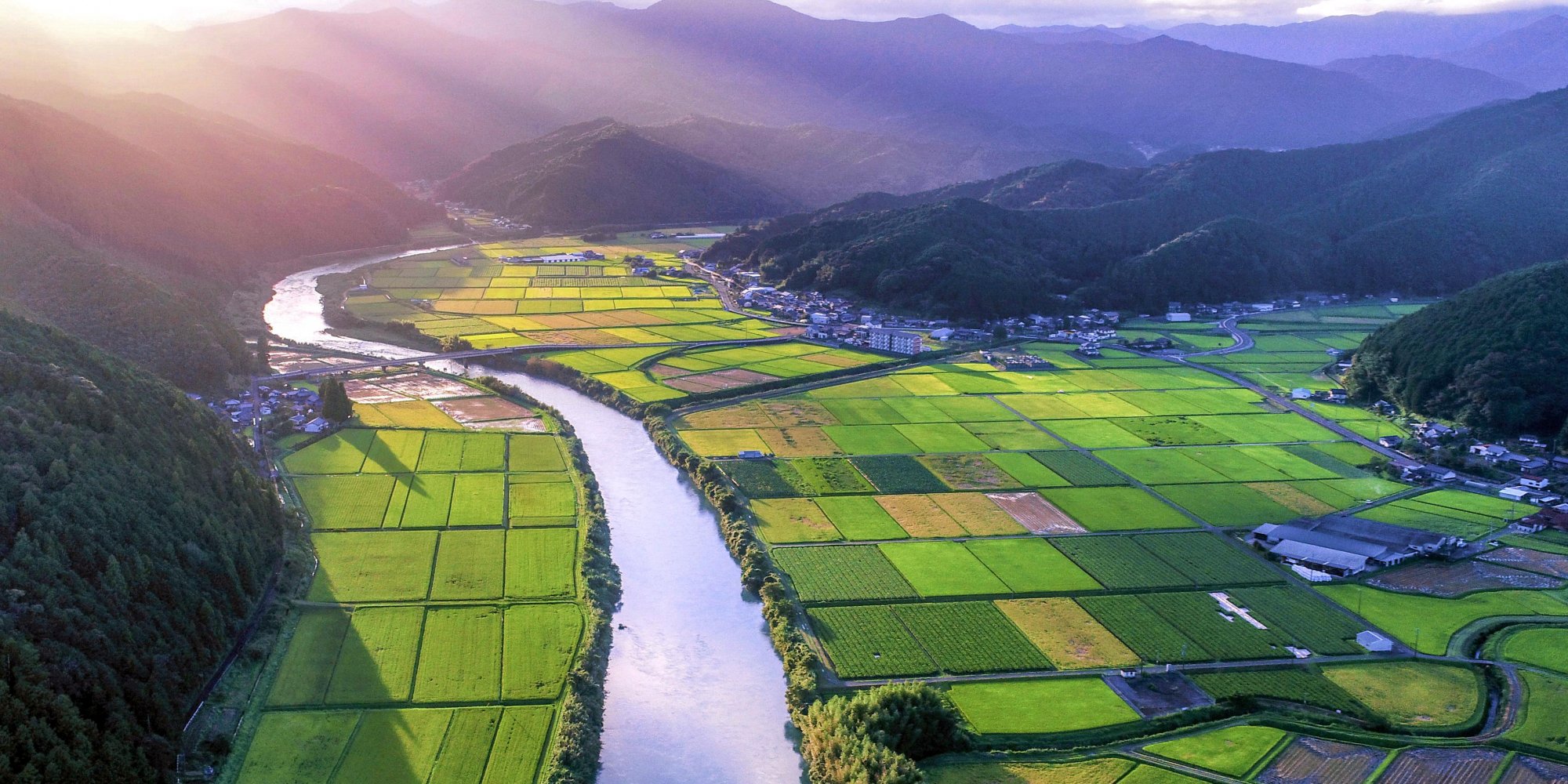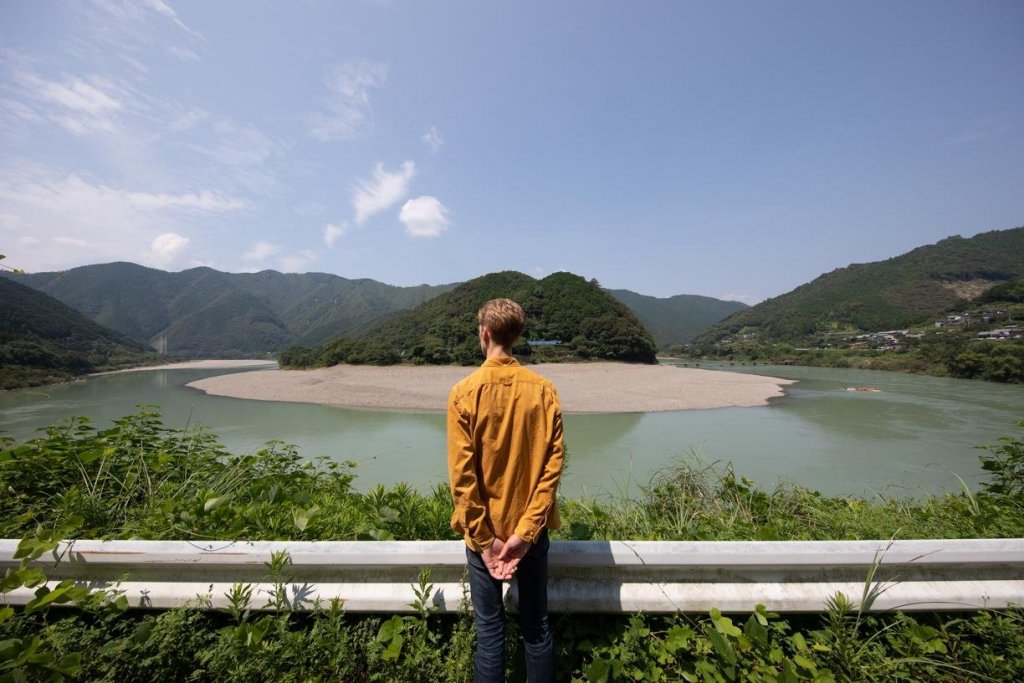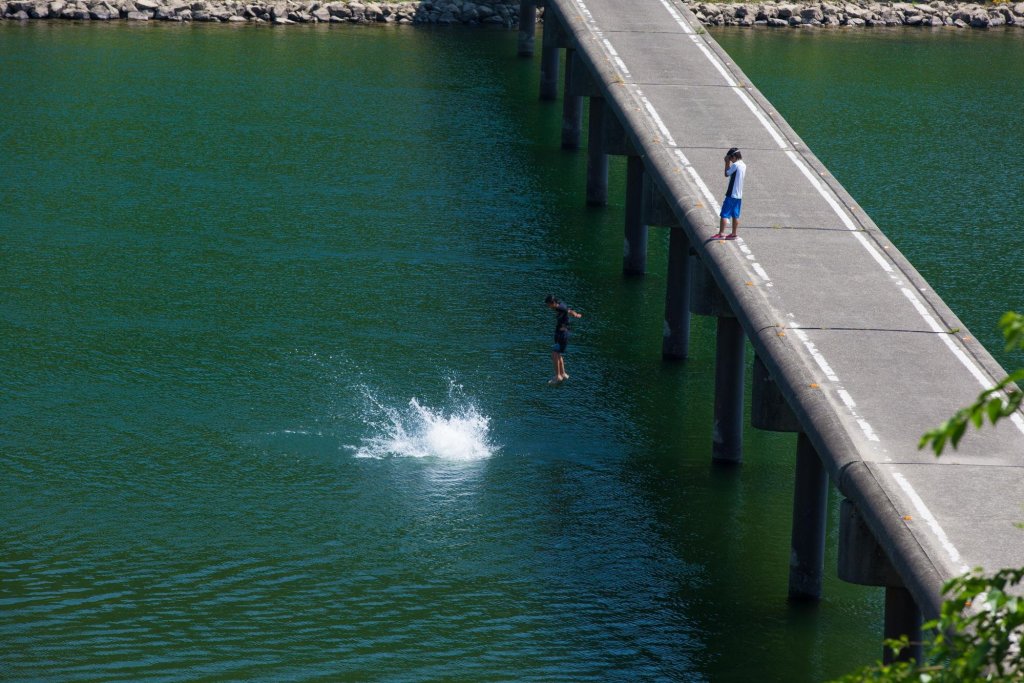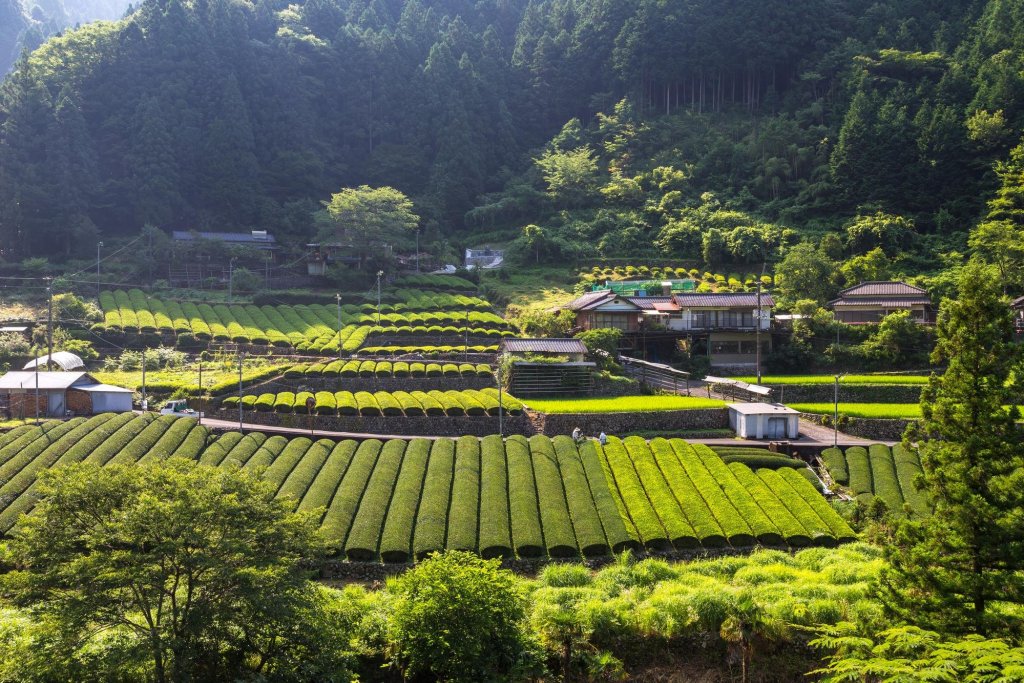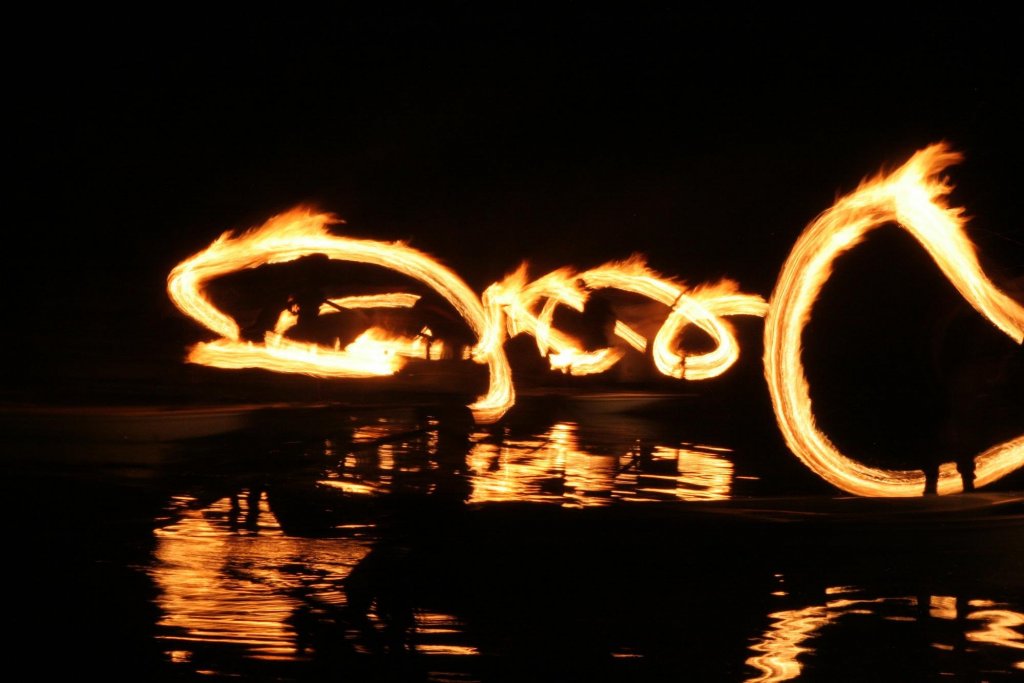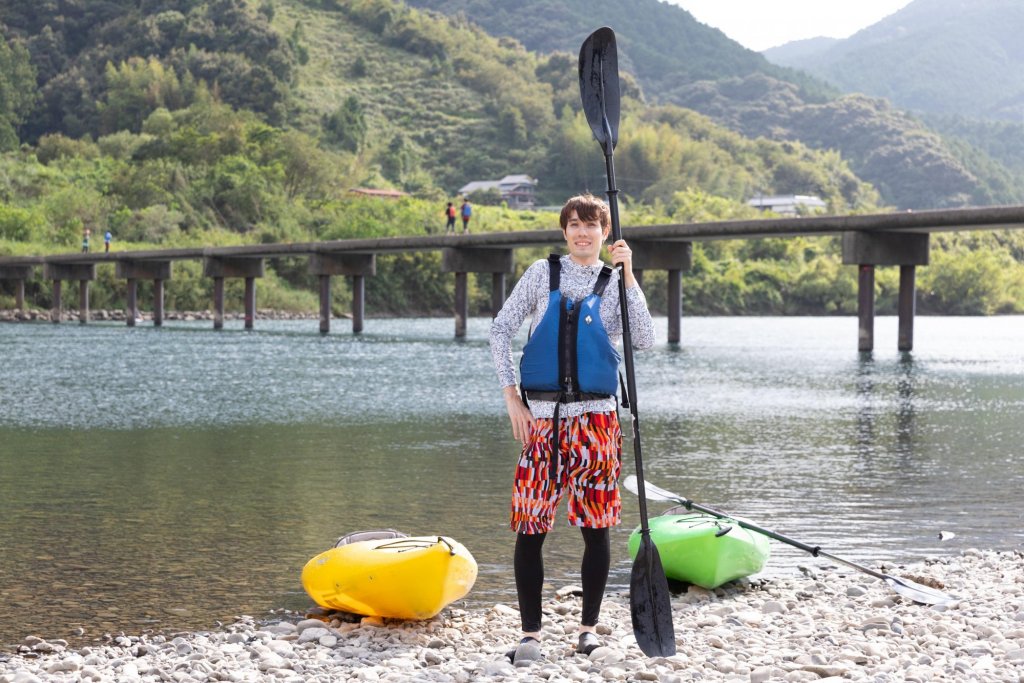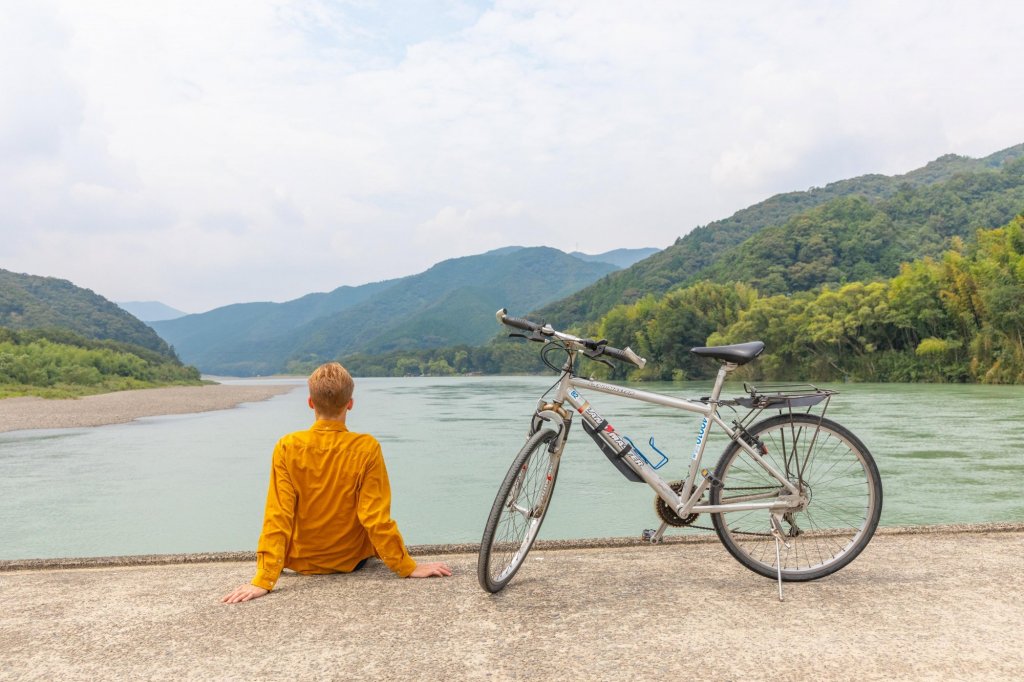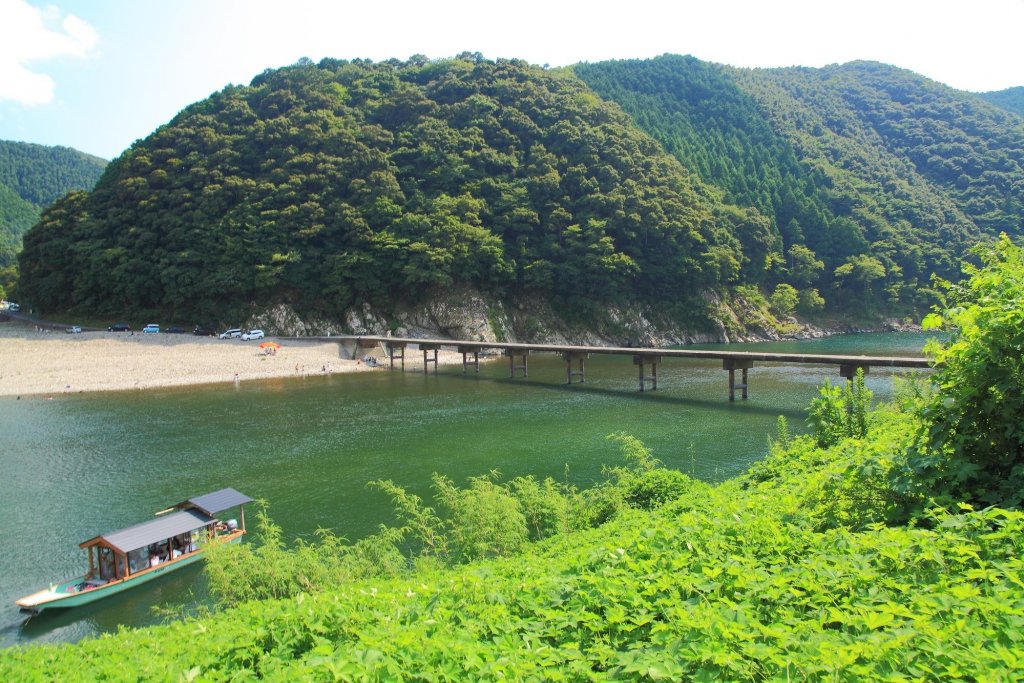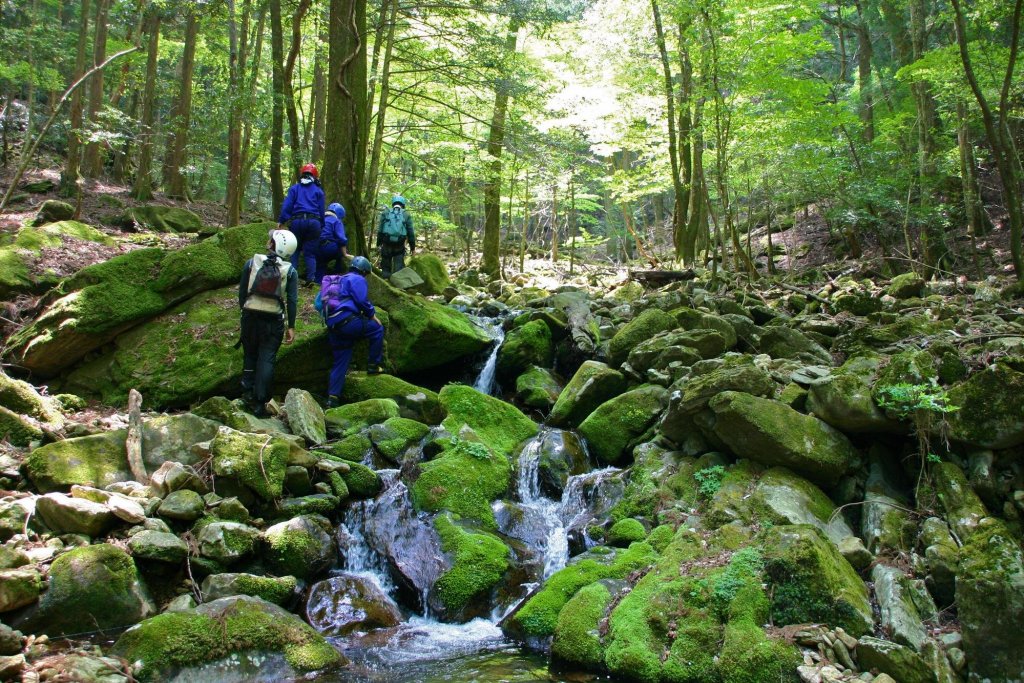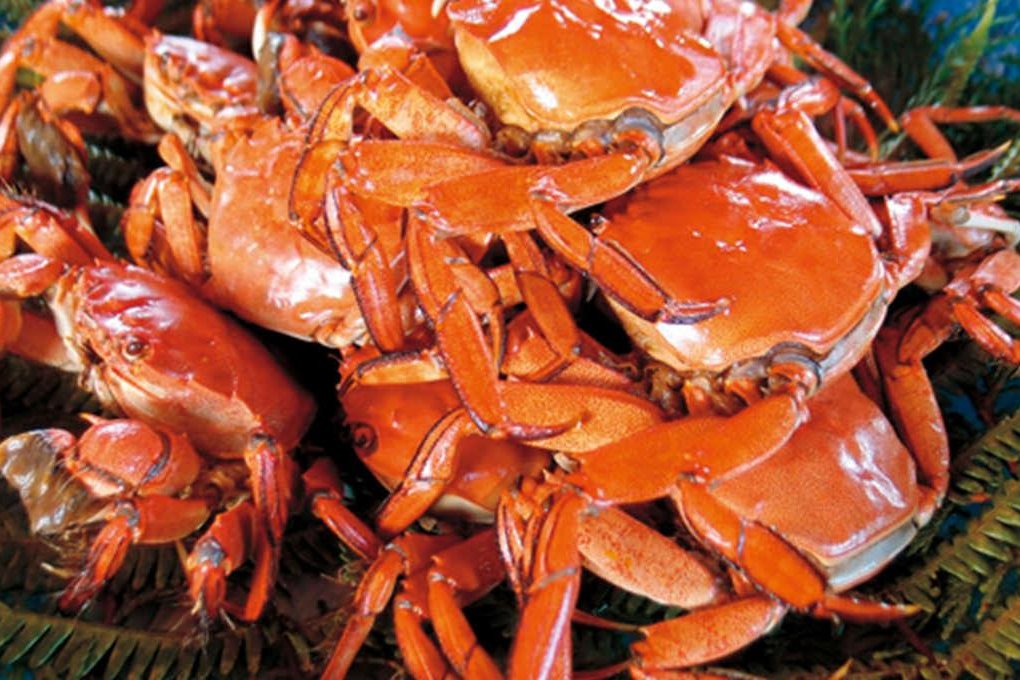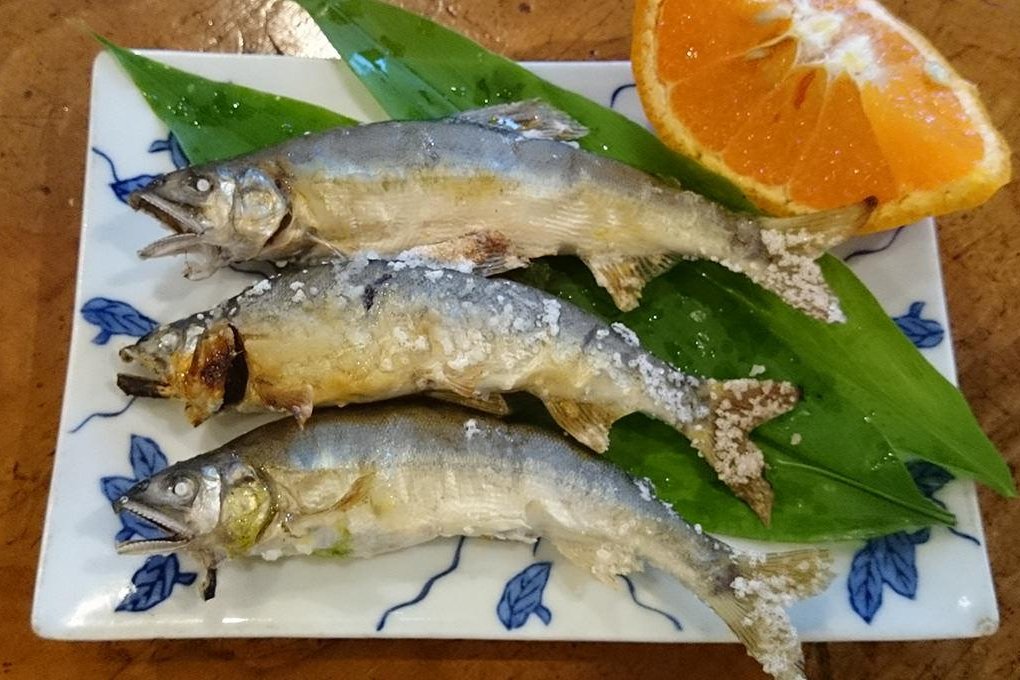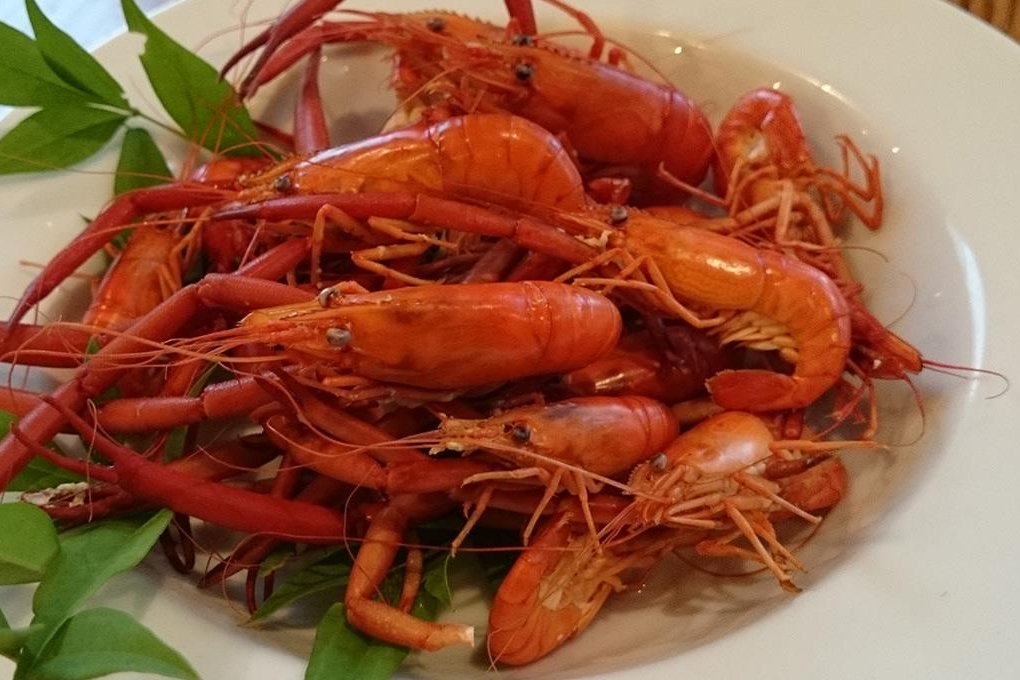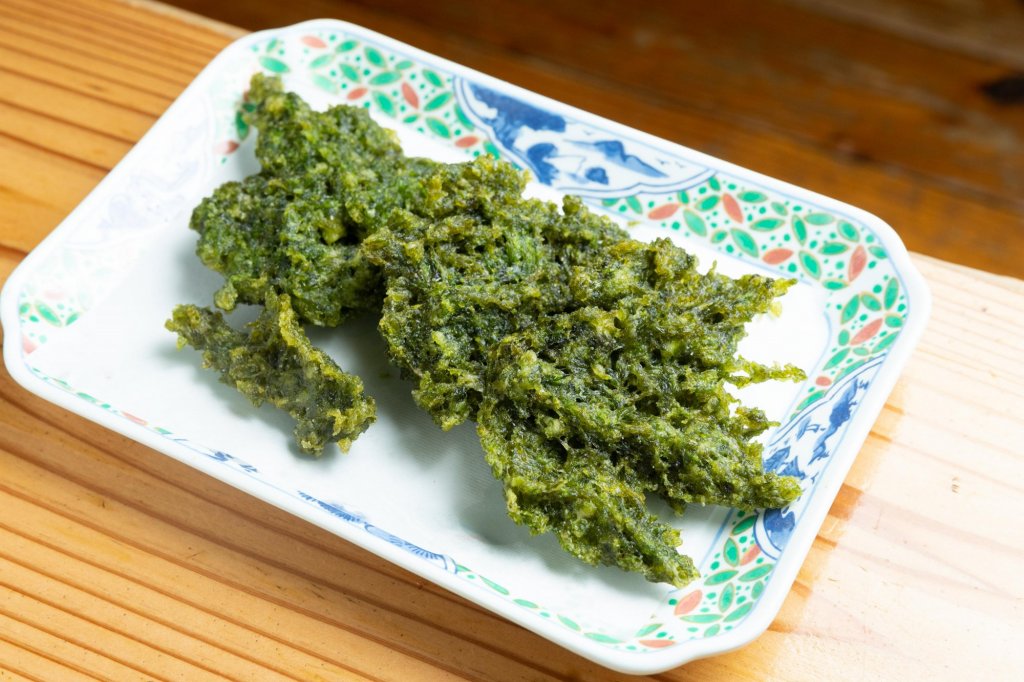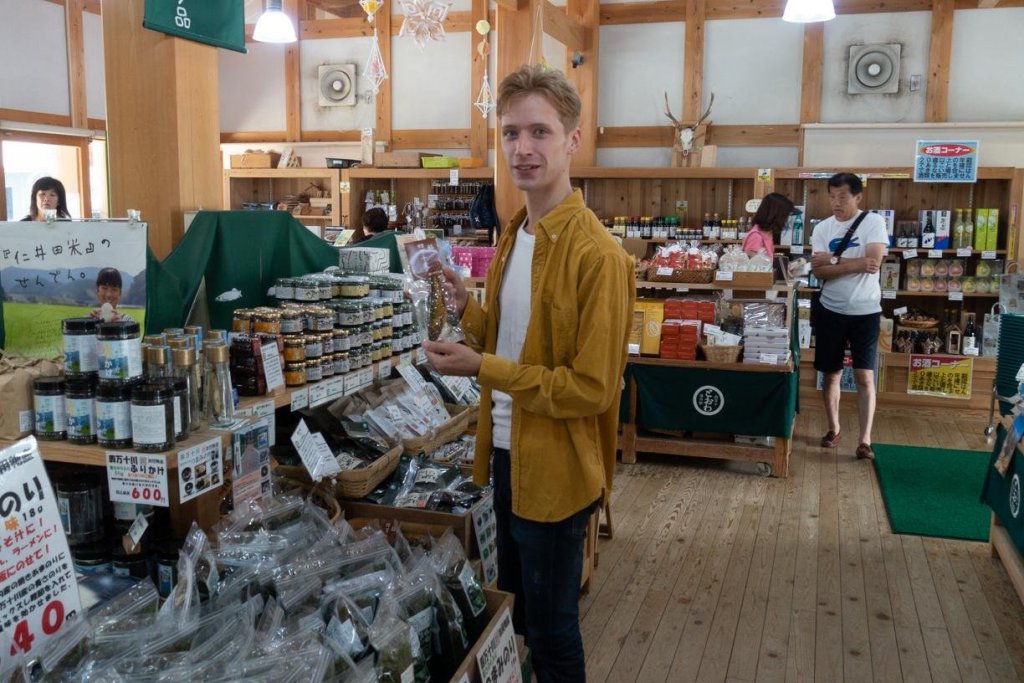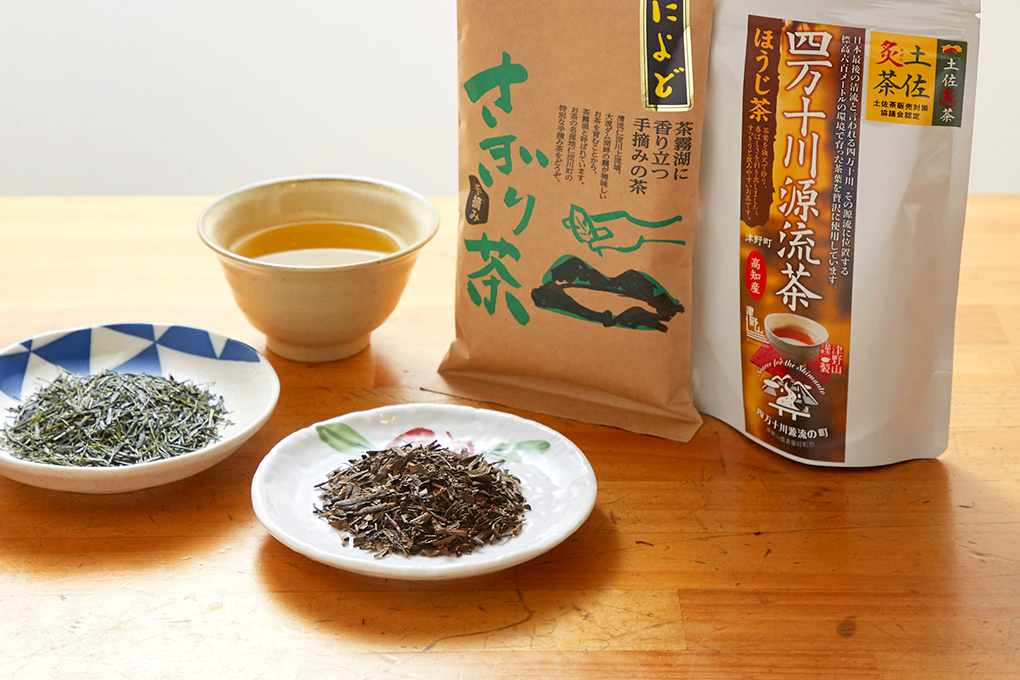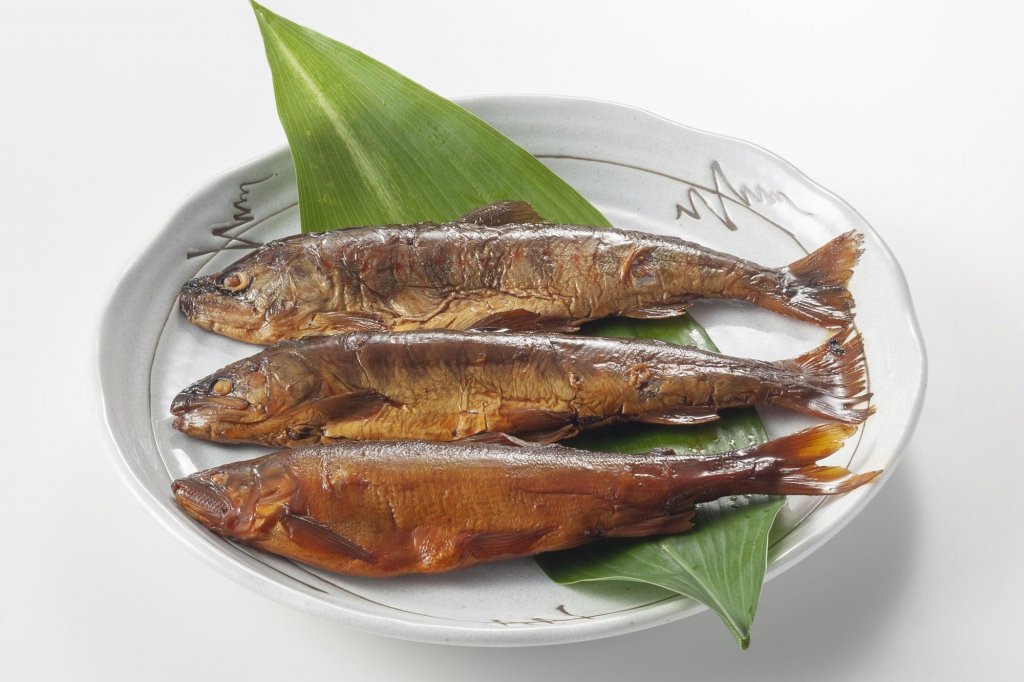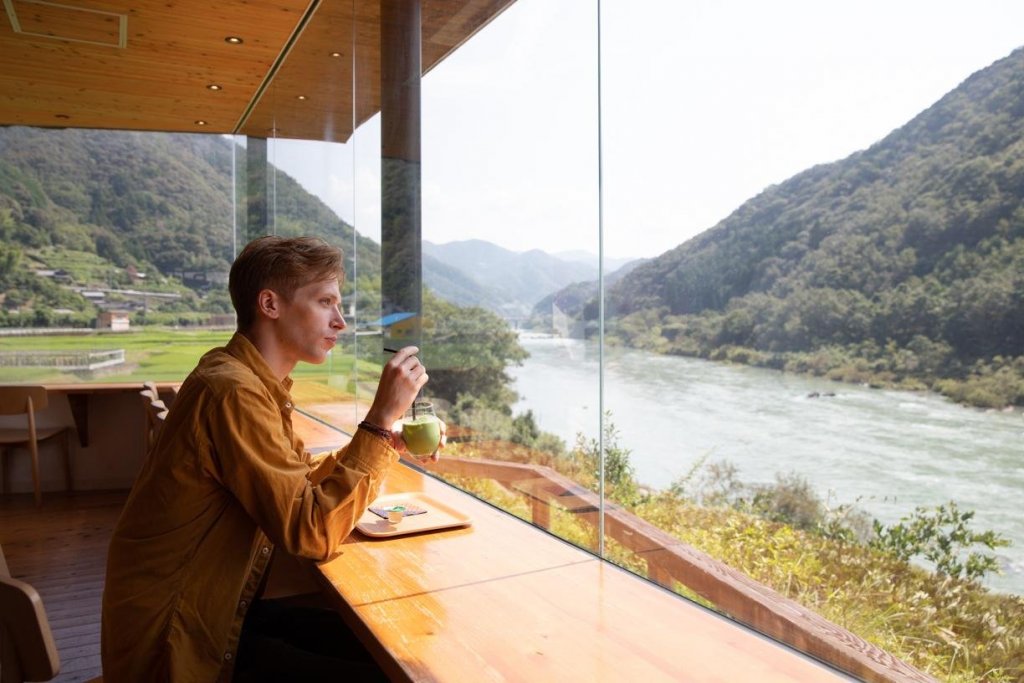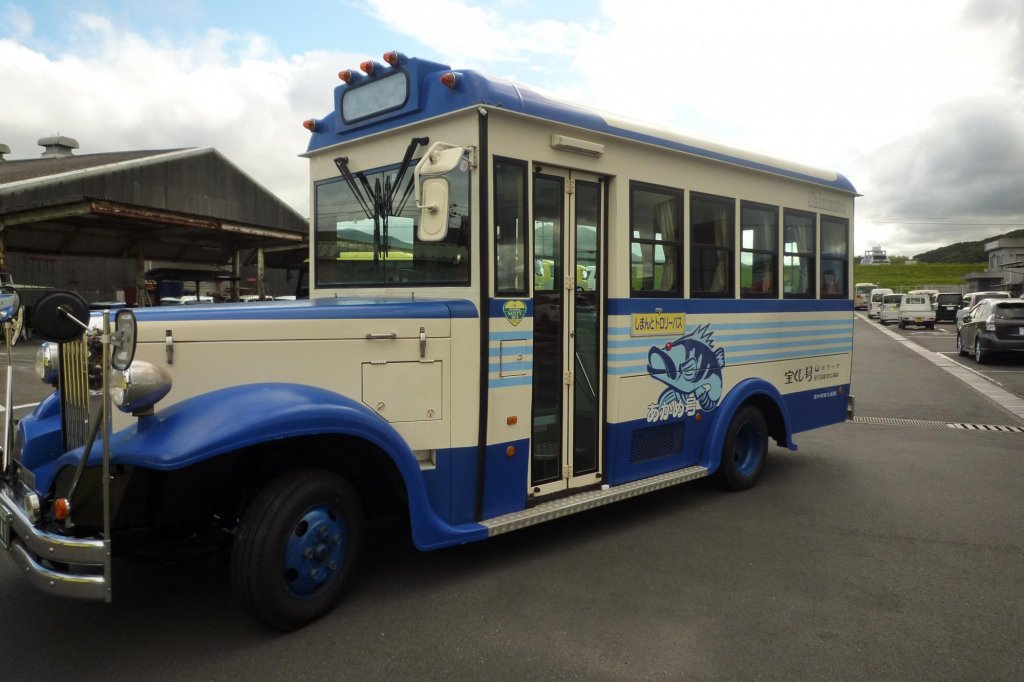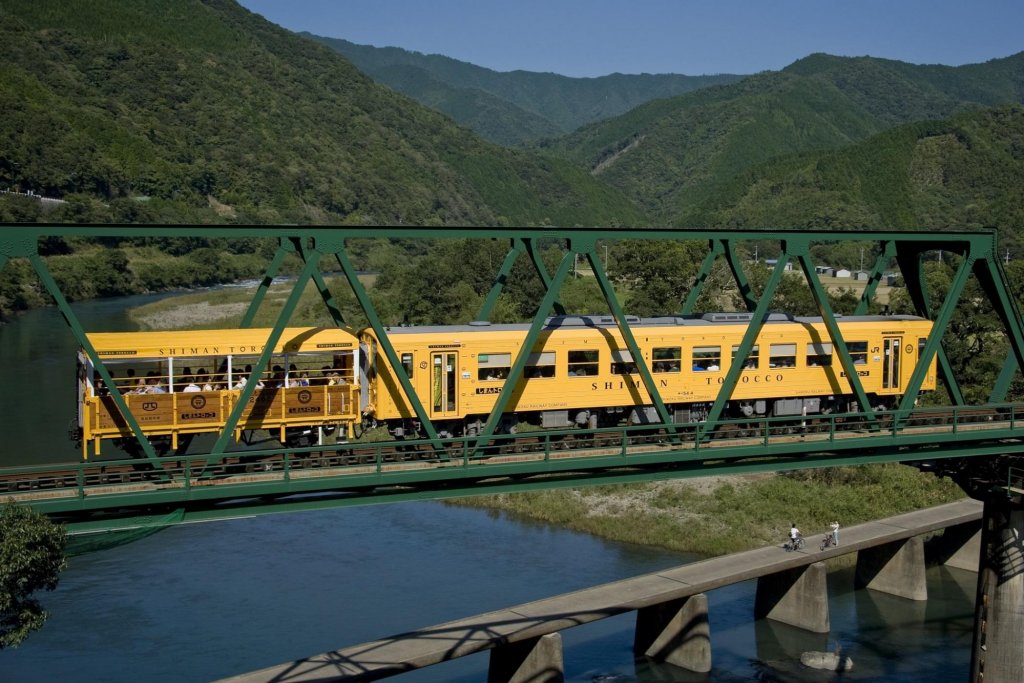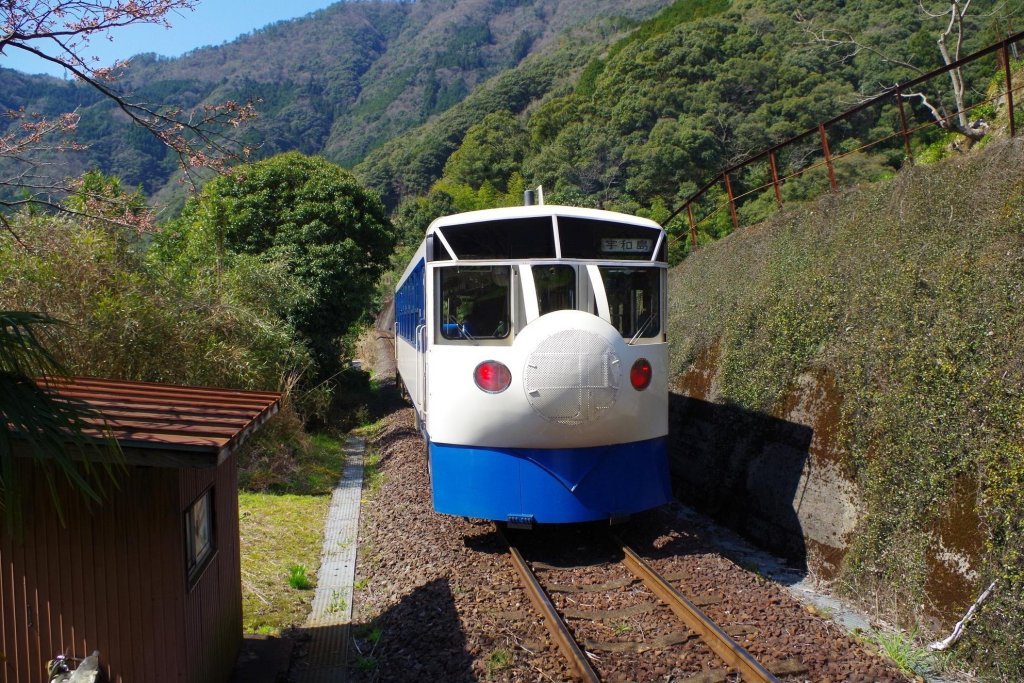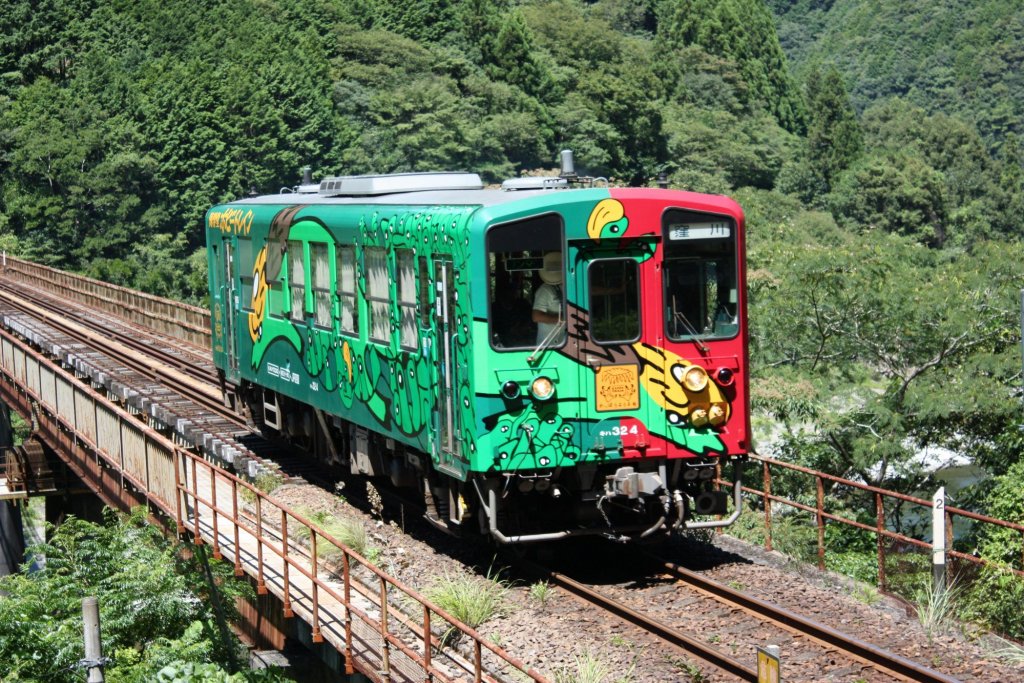Shimanto River Valley: Japan's Best Kept Secret
Running from the high mountains down to the sea, the Shimanto River’s clear waters not only welcome visitors looking to experience unspoiled nature, but also are an essential part of preserving Shimanto area traditions and food culture. From biking to canoeing, photography to sampling local cuisine, discover more about this secret gem.
About the Shimanto River
The Shimanto is Japan’s last free-flowing crystal clear river. Starting from a source deep in the mountains, the river makes its way to the Pacific Ocean 196km away, twisting and turning in lush little canyons and drawing strength from tributary rivers, until it becomes the blue-green ribbon you see in the Shimanto River Valley area.
One of the intriguing sights along the river are the chinkabashi bridges. These stocky submersible bridges are designed without balustrades so that during floods debris like fallen trees simply flow over them. Chinkabashi don't inhibit the flow of the river, making it less likely to burst its banks, and the bridge is also less prone to being washed away.
These bridges are an excellent example of how people in the Shimanto area try to live in harmony with the natural environment. Chinkabashi may look cute, but they are vital for connecting the small villages dotted along the river… and providing hours of fun for local kids who love jumping into the deep parts of the river from the bridges. There are 22 chinkabashi that cross the main river, and 26 more spanning the tributaries, so you are sure to come across (and actually cross!) a few during your visit.
One of the best times to visit the Shimanto River is during the spring and summer, when the forest seems to glow with fresh greenery! From mid-April to mid-May, hundreds of vibrant carp streamers called koinobori are hung across the river, while in early summer you can take a river boat tour to watch thousands of fireflies dancing in the air. If you are lucky, you may also be able to catch performances of kagura , ritual ceremonial dances that are still performed at some shrines around the area.
One of the intriguing sights along the river are the chinkabashi bridges. These stocky submersible bridges are designed without balustrades so that during floods debris like fallen trees simply flow over them. Chinkabashi don't inhibit the flow of the river, making it less likely to burst its banks, and the bridge is also less prone to being washed away.
These bridges are an excellent example of how people in the Shimanto area try to live in harmony with the natural environment. Chinkabashi may look cute, but they are vital for connecting the small villages dotted along the river… and providing hours of fun for local kids who love jumping into the deep parts of the river from the bridges. There are 22 chinkabashi that cross the main river, and 26 more spanning the tributaries, so you are sure to come across (and actually cross!) a few during your visit.
One of the best times to visit the Shimanto River is during the spring and summer, when the forest seems to glow with fresh greenery! From mid-April to mid-May, hundreds of vibrant carp streamers called koinobori are hung across the river, while in early summer you can take a river boat tour to watch thousands of fireflies dancing in the air. If you are lucky, you may also be able to catch performances of kagura , ritual ceremonial dances that are still performed at some shrines around the area.
Activities on the Shimanto River
Because the Shimanto River is so clean, nature lovers and families come from all over to play in the crystalline waters.
While wading and swimming in the river is great fun, one of the most popular activities is canoeing. The view from the water gives a better perspective of the surrounding scenery, and the views of the mountains that run along both sides of the river are truly beautiful. There are a few rapids along the river, adding another layer of excitement to the experience.
SUP (standup paddleboarding) is another great way to experience the river. The widest parts of the Shimanto are quite calm, making it a great place to try SUP for the first time. Sit or lay down on the board to spot fish swimming below, and if you get too hot you can always jump off and join them for a swim!
Other activities to try include river cruises on yakatabune (traditional roofed boats) near the mouth of the river, trekking along the tributaries or the headstream, and cycling along the riverside.
While wading and swimming in the river is great fun, one of the most popular activities is canoeing. The view from the water gives a better perspective of the surrounding scenery, and the views of the mountains that run along both sides of the river are truly beautiful. There are a few rapids along the river, adding another layer of excitement to the experience.
SUP (standup paddleboarding) is another great way to experience the river. The widest parts of the Shimanto are quite calm, making it a great place to try SUP for the first time. Sit or lay down on the board to spot fish swimming below, and if you get too hot you can always jump off and join them for a swim!
Other activities to try include river cruises on yakatabune (traditional roofed boats) near the mouth of the river, trekking along the tributaries or the headstream, and cycling along the riverside.
Taste the Bounty of the Shimanto River
While the river is beautiful and serene, it is also the lifeblood of the region, an essential part of the livelihood and culture of local residents.
Fishermen in the Shimanto River Valley still use traditional fishing methods that are rare in other parts of Japan, such as hiburi fishing, a method using fire torches to scare sweetfish into fishermen's nets. Some people catch eels and river prawns using the shibazuke fishing method, by making bundles of long leaves and submerging them in the river.
The clean, pure water of the Shimanto River makes it a treasure trove of delicious river fish, which feature prominently on local menus and are sought after by foodies around Japan. Here are a few to keep an eye out for during your travels:
●Japanese Mitten Crab (tsugani) - Season: September to November
These crabs look and taste similar to the expensive Chinese Mitten Crab. Thanks to living and hunting in clear water, the crabmeat has a rich flavor that pairs especially well with miso.
●Sweetfish (ayu) - Season: June to October
This river fish is called the “queen of the crystal river.” These fish feed on the high quality freshwater seaweed of the Shimanto River, giving them a clean, wild flavor.
●Freshwater prawns (ebi) - Season: May to October
Shimanto River freshwater prawns are packed full of flavor. Try them boiled in the shell or quickly deep fried.
●Eel (unagi) - Season: May to October
There is nothing like the taste of freshly caught wild eel, grilled over charcoal and coated with tasty sauce. Food lovers come from far and wide to try dishes made with Shimanto eels!
However, it isn’t all about the fish. The Shimanto River is a prosperous tea growing region, making both black and green varieties, and around the mid-stream region you will find tea fields shrouded in river mists. Tea leaves from Shimanto make great souvenirs. Chestnuts are another local specialty, with chestnut paste-filled Japanese-style sweets, called kuri kinton , being particularly popular treats!
Another must-try food is suji aonori, a type of freshwater seaweed found mainly in the waters around the Shimanto River estuary. It's soft and full of flavor, and most often eaten as a crunchy tempura fritter.
Fishermen in the Shimanto River Valley still use traditional fishing methods that are rare in other parts of Japan, such as hiburi fishing, a method using fire torches to scare sweetfish into fishermen's nets. Some people catch eels and river prawns using the shibazuke fishing method, by making bundles of long leaves and submerging them in the river.
The clean, pure water of the Shimanto River makes it a treasure trove of delicious river fish, which feature prominently on local menus and are sought after by foodies around Japan. Here are a few to keep an eye out for during your travels:
●Japanese Mitten Crab (tsugani) - Season: September to November
These crabs look and taste similar to the expensive Chinese Mitten Crab. Thanks to living and hunting in clear water, the crabmeat has a rich flavor that pairs especially well with miso.
●Sweetfish (ayu) - Season: June to October
This river fish is called the “queen of the crystal river.” These fish feed on the high quality freshwater seaweed of the Shimanto River, giving them a clean, wild flavor.
●Freshwater prawns (ebi) - Season: May to October
Shimanto River freshwater prawns are packed full of flavor. Try them boiled in the shell or quickly deep fried.
●Eel (unagi) - Season: May to October
There is nothing like the taste of freshly caught wild eel, grilled over charcoal and coated with tasty sauce. Food lovers come from far and wide to try dishes made with Shimanto eels!
However, it isn’t all about the fish. The Shimanto River is a prosperous tea growing region, making both black and green varieties, and around the mid-stream region you will find tea fields shrouded in river mists. Tea leaves from Shimanto make great souvenirs. Chestnuts are another local specialty, with chestnut paste-filled Japanese-style sweets, called kuri kinton , being particularly popular treats!
Another must-try food is suji aonori, a type of freshwater seaweed found mainly in the waters around the Shimanto River estuary. It's soft and full of flavor, and most often eaten as a crunchy tempura fritter.
Where to Shop Along the Shimanto River
If you're looking for tasty items to take home, be sure to check out all the packaged foods and snacks made with high quality ingredients from the Shimanto River. Two only-in-Shimanto items are tsukudani , freshwater seaweed simmered in soy sauce, and kanroni , a whole sweetfish simmered in soy sauce. You can get these in jars or vacuum seal packs, making them easy to tuck into a suitcase. Not a huge fan of fish? There are plenty of treats made with chestnuts, green tea or citrus grown nearby!
Visitors can find these and more at souvenir shops or the Michi-no-Eki highway rest areas that are dotted along the expressway in the Shimanto River area.
●Aguri Kubokawa Rest Area (Michi-no-Eki Aguri Kubokawa)
Address: 284-1 Hiragushi, Shimanto Town, Takaoka Gun
TEL: 0880-22-8848
Hours: 8:00am~6:00pm
Closed: Every 3rd Wednesday of odd-numbered months, last day of March
●Shimanto Taisho Rest Area (Michi-no-Eki Shimanto Taisho)
Address: 17-1 Taisho, Shimanto Town, Takaoka Gun
TEL: 0880-27-0088
Hours: April to September: 7:30am to 5:00pm, October to March: 8:30am to 5:00pm
Closed: Closed only December 31st to January 2nd
●Shimanto Towa Rest Area (Michi-no-Eki Shimanto Towa)
Address: 62-9 Towa Kawaguchi, Shimanto Town, Takaoka Gun
TEL: 0880-28-5421
Hours: Shop: 8:30am to 5:00pm, Restaurant: 11:00am to 3:00pm (last order 2:30pm)
Closed: Irregular closing days
●Yotte Nishi Tosa Rest Area (Michi-no-Eki Yotte Nishi-Tosa)
Address: 2410-3 Ekawasaki, Nishi Tosa, Shimanto City
TEL: 0880-52-1398
Hours: 7:30~18:00
Closed: Closed on Tuesdays from December to February
Visitors can find these and more at souvenir shops or the Michi-no-Eki highway rest areas that are dotted along the expressway in the Shimanto River area.
●Aguri Kubokawa Rest Area (Michi-no-Eki Aguri Kubokawa)
Address: 284-1 Hiragushi, Shimanto Town, Takaoka Gun
TEL: 0880-22-8848
Hours: 8:00am~6:00pm
Closed: Every 3rd Wednesday of odd-numbered months, last day of March
●Shimanto Taisho Rest Area (Michi-no-Eki Shimanto Taisho)
Address: 17-1 Taisho, Shimanto Town, Takaoka Gun
TEL: 0880-27-0088
Hours: April to September: 7:30am to 5:00pm, October to March: 8:30am to 5:00pm
Closed: Closed only December 31st to January 2nd
●Shimanto Towa Rest Area (Michi-no-Eki Shimanto Towa)
Address: 62-9 Towa Kawaguchi, Shimanto Town, Takaoka Gun
TEL: 0880-28-5421
Hours: Shop: 8:30am to 5:00pm, Restaurant: 11:00am to 3:00pm (last order 2:30pm)
Closed: Irregular closing days
●Yotte Nishi Tosa Rest Area (Michi-no-Eki Yotte Nishi-Tosa)
Address: 2410-3 Ekawasaki, Nishi Tosa, Shimanto City
TEL: 0880-52-1398
Hours: 7:30~18:00
Closed: Closed on Tuesdays from December to February
Tips for Getting Around the Shimanto Area
If you're traveling around the Shimanto River on public transport, there are buses that operate out of Nakamura Station on the Tosa Kuroshio Railway, the easiest station to reach from Kochi City.
●Shimanto River Bus
Running between Nakamura Station and Ekawasaki Station - passing by some of the highlights in the area.
TEL: 0880-34-1266 (Kochi Seinan Transport)
Operating times: Weekends in October through to March, public holidays, and spring break.
Fare: ¥1,500 course, ¥2,400 course (attraction entrance fees, boat fares, activity fees, meals etc. not included)
●Shimanto Trolley Bus
Sightseeing from Shimanto City to Sada Chinkabashi Bridge. 5 buses/day with hop on-hop off service.
TEL: 0880-34-1266 (Kochi Seinan Transport)
Operating times: spring and winter vacation, please check online for exact dates.
Fare: ¥500 for 1 day
Train fans might be interested in the JR Yodo Line that connects Kubokawa Station in the upstream Shimanto area with Uwajima Station in Ehime Prefecture. It's a scenic line, passing along the Shimanto River and some of its tributaries. There are regular trains throughout the day, but for an extra special experience book a spot on the Shimantorocco train! This open air train offers the absolute best views of the countryside. The trip from JR Kubokawa Station to JR Ekawasaki Station in the mid-stream area takes about one hour, and all seats are reserved. The trains operate one return trip per day on Saturdays and holidays during spring, summer and autumn.
The Shimantorocco train is not the only train worth checking out on this line. There is also a train shaped like a shinkansen (bullet train) and one covered in designs celebrating kappa, a mythical water-dwelling creature!
●Shimanto River Bus
Running between Nakamura Station and Ekawasaki Station - passing by some of the highlights in the area.
TEL: 0880-34-1266 (Kochi Seinan Transport)
Operating times: Weekends in October through to March, public holidays, and spring break.
Fare: ¥1,500 course, ¥2,400 course (attraction entrance fees, boat fares, activity fees, meals etc. not included)
●Shimanto Trolley Bus
Sightseeing from Shimanto City to Sada Chinkabashi Bridge. 5 buses/day with hop on-hop off service.
TEL: 0880-34-1266 (Kochi Seinan Transport)
Operating times: spring and winter vacation, please check online for exact dates.
Fare: ¥500 for 1 day
Train fans might be interested in the JR Yodo Line that connects Kubokawa Station in the upstream Shimanto area with Uwajima Station in Ehime Prefecture. It's a scenic line, passing along the Shimanto River and some of its tributaries. There are regular trains throughout the day, but for an extra special experience book a spot on the Shimantorocco train! This open air train offers the absolute best views of the countryside. The trip from JR Kubokawa Station to JR Ekawasaki Station in the mid-stream area takes about one hour, and all seats are reserved. The trains operate one return trip per day on Saturdays and holidays during spring, summer and autumn.
The Shimantorocco train is not the only train worth checking out on this line. There is also a train shaped like a shinkansen (bullet train) and one covered in designs celebrating kappa, a mythical water-dwelling creature!
